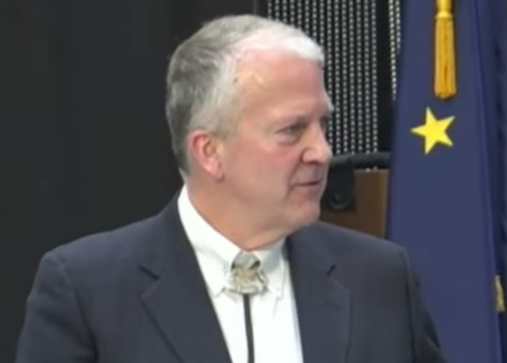CAMP DENALI, Alaska – Wars are won by the courageous men and women who fight in the air, on the sea and in the trenches. They fight to bring peace, stability and liberty to our fractured world, while living the core values this country was founded upon.
Spirited in fight, these brave soldiers meet the enemy on uneven ground, some giving their lives for their fellow service members, while others are seriously injured on the field of battle. In the critical moments that follow, during this golden hour, where prompt intervention is needed to get an injured soldier to a trauma care facility, America’s warriors depend on elite combat search and rescue units like the Alaska Air National Guard’s 210th, 211th and 212th Rescue Squadrons.
From late May to October 2012, more than 180 citizen-Airmen of the Alaska Air National Guard’s 176th Wing were deployed to Afghanistan in support of Operation Enduring Freedom. At the peril of losing their own lives, these men and women dedicated themselves to the mission of helping fellow service members get the critical help they needed, resulting in 226 American heroes’ lives saved.
“The men were very satisfied with the missions we executed over the five month stretch,” said Alaska Air National Guard Maj. Matt Komatsu, 212th Rescue Squadron director of operations. “We saw it all – wounded coalition and Afghan civilians, downed aircraft, extended ground operations while integrated with U.S. Marine Corps recon troops. We even fought alongside UK troopers in defense of Camp Bastion during the most devastating airfield incursion to occur since the Vietnam War. The experiences were diverse, challenging, and dangerous, and each man was tested and found equal to the task.”
Intervening to save lives, Komatsu and fellow Guardian Angels from the Alaska Air National Guard rescue squadrons often found themselves in difficult situations engaging enemies while attempting to bring back the sons and daughters of coalition forces.
“In late July, we were alerted with a casevac [casualty evacuation] of two Danish soldiers whose vehicle hit an IED and were in the middle of a fire fight,” Komatsu said. “Guardian Angel teams responded on HH-60s into an active landing zone with small arms fire and grenade launches coming from multiple directions. When the helo landed, Tech Sgt. Chris Harding, Staff Sgt. Nick Watson and Staff Sgt. Bill Cenna made a run under fire through an uncleared IED field, a flowing canal and then climbed a 12-foot embankment to reach the wounded Danish soldiers. After rendering care to the wounded, they realized they had four, not two patients to move, so the team quickly stabilized the patients and made their way back to the helicopter through a barrage of small arms fire before turning around and going back to bring the other two back safely to the helo waiting to take them to the hospital. Their actions resulted in four lives saved.”
Extreme stories of heroism and courageous actions, as shared by Komatsu, have become the norm for Guardian Angels from the Alaska Air National Guard at home and abroad. Their missions are detailed in the countless recommendations for decorations from this deployment, but it’s the team and the unity of effort at every level of the operation they will tout as the reason they are so successful in saving lives in these austere conditions.
|
|
“Guys were getting off the ground in six minutes, even though we were on a 15-minute response time per the directive,” said Alaska Air National Guard Lt. Col. Steve Latham, 210th Rescue Squadron director of operations. “I think our quickest mission from takeoff to landing was 13-minutes, and the soldier was seven miles away. These guys were always ready to go when the call came in and performed extremely well under pressure, frequently taking fire during rescues.”
 Flying more than 850 missions and nearly 600 hours in a five-month period also requires a significant support team ready to assist any way it can, and according to Komatsu and Latham, the 176th maintenance personnel deserve a lot of credit for their part in Afghanistan.
Flying more than 850 missions and nearly 600 hours in a five-month period also requires a significant support team ready to assist any way it can, and according to Komatsu and Latham, the 176th maintenance personnel deserve a lot of credit for their part in Afghanistan.
“Maintenance deserves a lot of praise for what they did,” Komatsu said. “They got birds up in the air, kept them up in the air and repaired them after they got shot up; it was a huge team effort.”
“Our maintenance troops were stellar,” Latham said. “We fly them hard over there, and it’s hard to maintain them because stuff breaks more often, but they were extremely focused and absolutely understood the importance of what was going on. A less motivated crew and we would not have been as effective. When we got a radio call these guys were sprinting out towards the helicopter to help get us airborne, throwing vests on the guys, helping them strap in and that’s not something you normally see in the helicopter world, but because we’ve known most of these guys for 10-15 years in some cases, there’s a motivation to do the best you can for your bros. There’s a special relationship with a Guard or Reserve unit.”
Back at home in Alaska, the unit now continues to focus on training and the mission of saving lives here in Alaska, a mission Komatsu says helped them greatly in Afghanistan.
|
|
“It is a concrete truth that the 11th Air Force Search and Rescue mission and the 100-plus search and rescues we execute a year prepare us for an effortless transition to combat personnel recovery,” Komatsu said. “We have seamless integration with our HH-60s and HC-130s up here in Alaska, which became absolutely crucial in Afghanistan. You have to know that when the money is on the line, your pilots can work together to conduct air refueling out there. Guardian Angels in Alaska don’t have to be sharp the four months they deploy, they have to stay sharp 365 days a year. You can’t buy that kind of mission focus through training; it can only come with repeated operations, which we have up here. The transition is seamless, the mission essentially the same; we simply transition from weather and environmental threats to combat threats.”
The deployment to Afghanistan was the single largest deployment of personnel from the 176th Wing since 2003.








